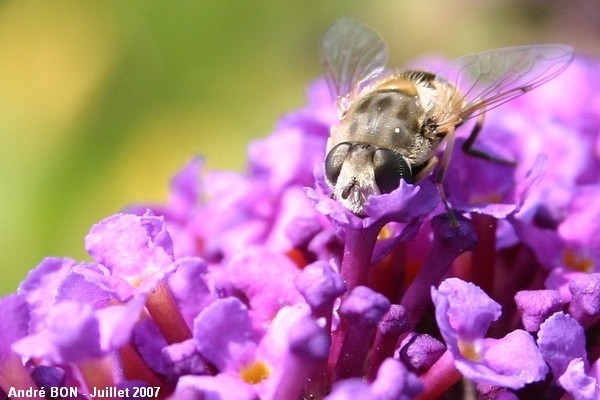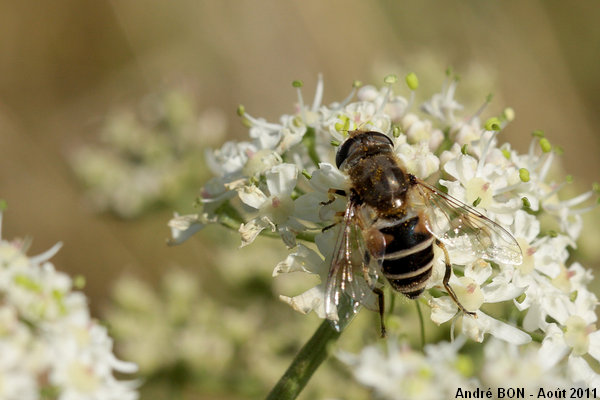

| Eristalis arbustorum (Linnaeus, 1758) |


|
|
Scientific name: Eristalis arbustorum (Linnaeus, 1758) Common name: French name: Eristale des arbustes Order: Diptera Family: Syrphidae Wingspan : 8 -11 mm. Biotope: Larvae called rat-tailed maggot live in stagnant putrid water. They feed on bacteria living in water polluted with organic matter. Imagos can be seen on all kinds of flowers. Geographic area: Europe, North Africa, Asia, North America. Observation period : March to October. |
Eristalis arbustorum is characterized by its small size among other members of the Eristalis genus. Tergite 2 of the abdomen shows two yellow lateral patches which extend over the hind margin and seem to continue on tergite 3, especially on males. So the dark central patch appears as hourglass-shaped. Females show a thin white stripe on the hind edge of each tergite. The head profile is rounded. The face is often greyish and does not show any middle stripe. The arista is feathery. The wings are clear. The eyes are hairy. Eristalis abusiva is very similar. It shows a thin middle stripe on the face. The arista is very slightly feathery and tibia 2 is yellow with just some brown colour at the apex. Tibia 2 is clearly bi-coloured on Eristalis arbustorum. |
| [To know more about the Eristalis arbustorum] [Next picture] [Top] |

|
The grey face without any stripe, the hairy eyes and the bi-coloured tibia 2 seem to indicate Eristalis arbustorum. The quality of the picture is not enough to see if the arista is feathery. The clearly separated eyes indicate one female. |
| [To know more about the Eristalis arbustorum] [Previous picture] [Top] |

|
I have added this picture here because this can be one female Eristalis arbustorum. However I have listed it as Eristalis sp. as there is still an important doubt. We would have needed a front view, without middle stripe on the face, to confirm Eristalis arbustorum. The white stripes on the hind edge of each tergite and the white apex on femur 3 permit to restrict the possible species to Eristalis arbustorum and Eristalis interrupta. I thought I could use the size of the pterostigma to tell the species apart but this appeared impossible to me after some researches in various photo galleries. |